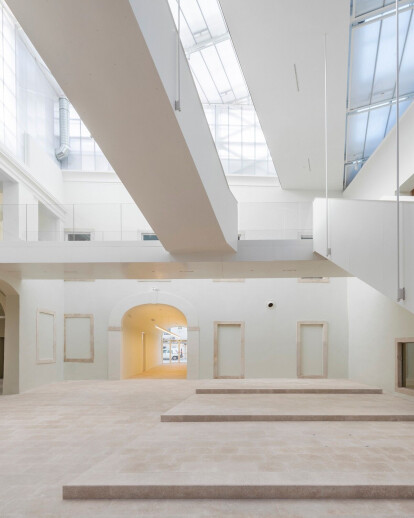Providur’s Palace is the most recently renovated part of an integrated architectural complex in the historic center of Zadar. Together with the previously renovated Rector’s Palace, it now forms a new city institution, Two Palaces - a contemporary intervention within the renovated historical landmarks. This newborn nexus of art and culture stretches over an area of ten thousand square meters. The complex has been envisioned as a cultural living room for the city of Zadar, as well as a significant center of art and culture in the national context. The renovated palaces now form a well-connected complex while the final functional unification into a single entity will be completed within the scheduled third phase of the project. Most of the interior of the Providur’s Palace is dedicated to gallery spaces while, along with exhibition and educational activities, the building also hosts a branch of the Zadar City Library as well as two concert halls.

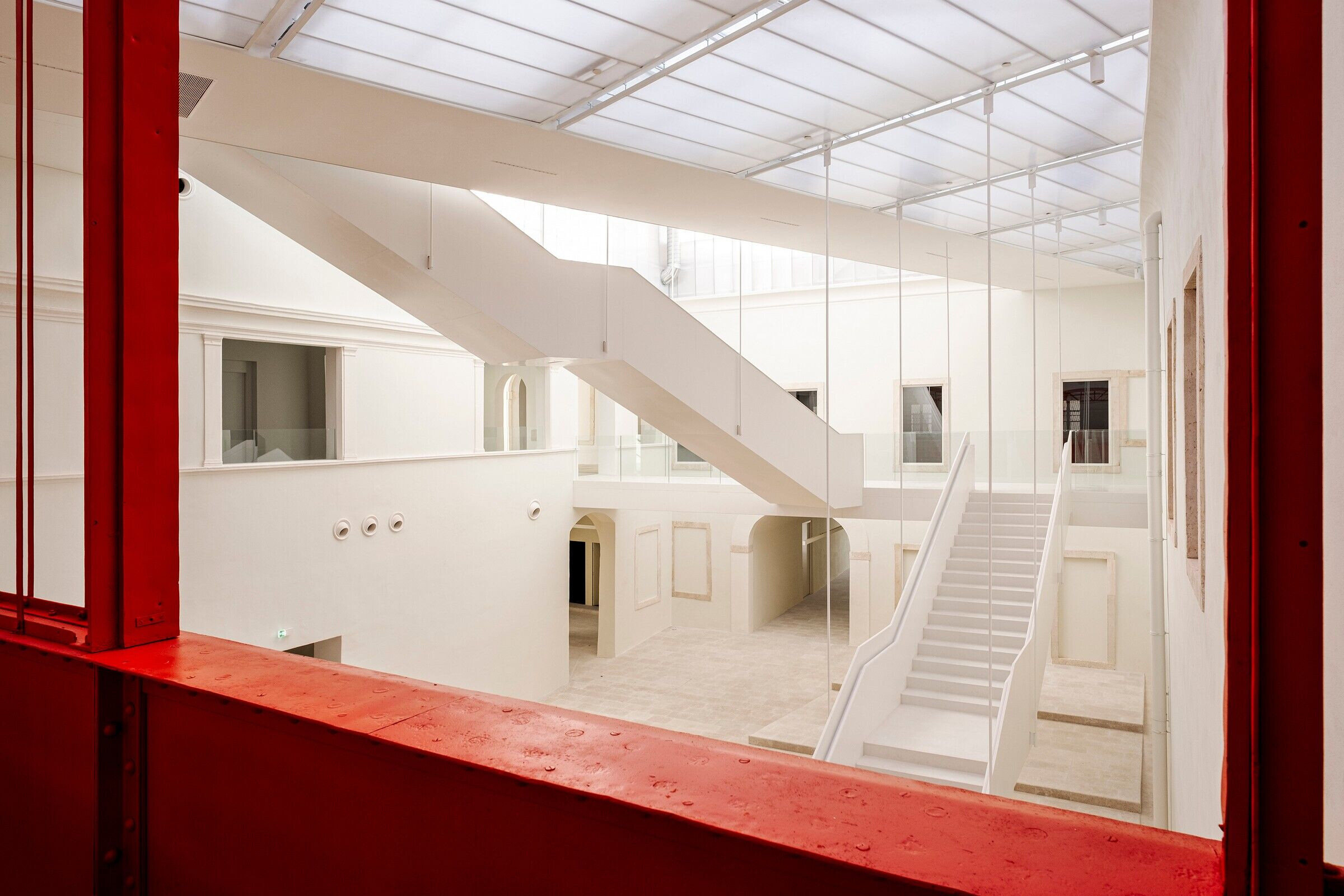
In the context of historical architecture, the old palaces are the most impressive building complex in the old city center. During the last few decades Providur’s Palace hosted various city institutions, civil associations, clubs, and other small users. The Two Palaces compound has been in the process of continuous expansion, reconstruction, partitioning, and destruction depending on the needs of each specific time. Therefore the interior spaces of the palaces were not well integrated on the inside, over the centuries it had become a labyrinth which, as a tangled web, extended not only horizontally, but also vertically.

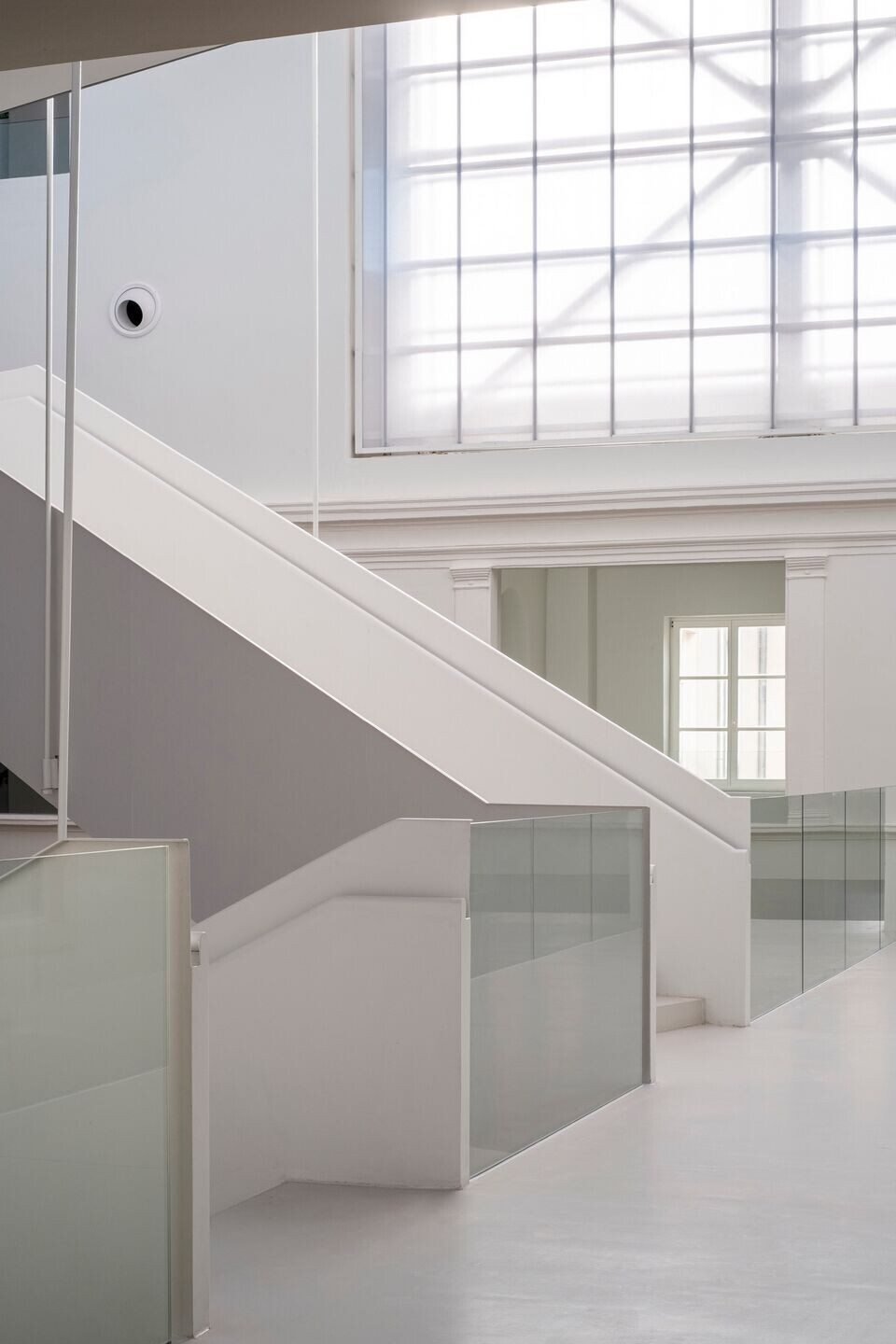
The overall task for the architects was to create a new and multifaceted interior within the historical compound.The extremely heterogenous conditions had to be transformed to welcome the different use: Zadar National Museum, a concert hall, a multifunctional hall, the Zadar Concert Office and the city library. The extreme spatial incoherency of the previous layout was entirely unsuitable as a museum space. One of the architects’ major tasks was to create a clear route through the space and make the labyrinthine structure readable. While designing the project for the renovation of both palaces, the architects decided to keep this precious complex, the frozen image of all the transformations and traumas the buildings experienced through history, in the form that it was found in, and not destroy the existing spatial structure.
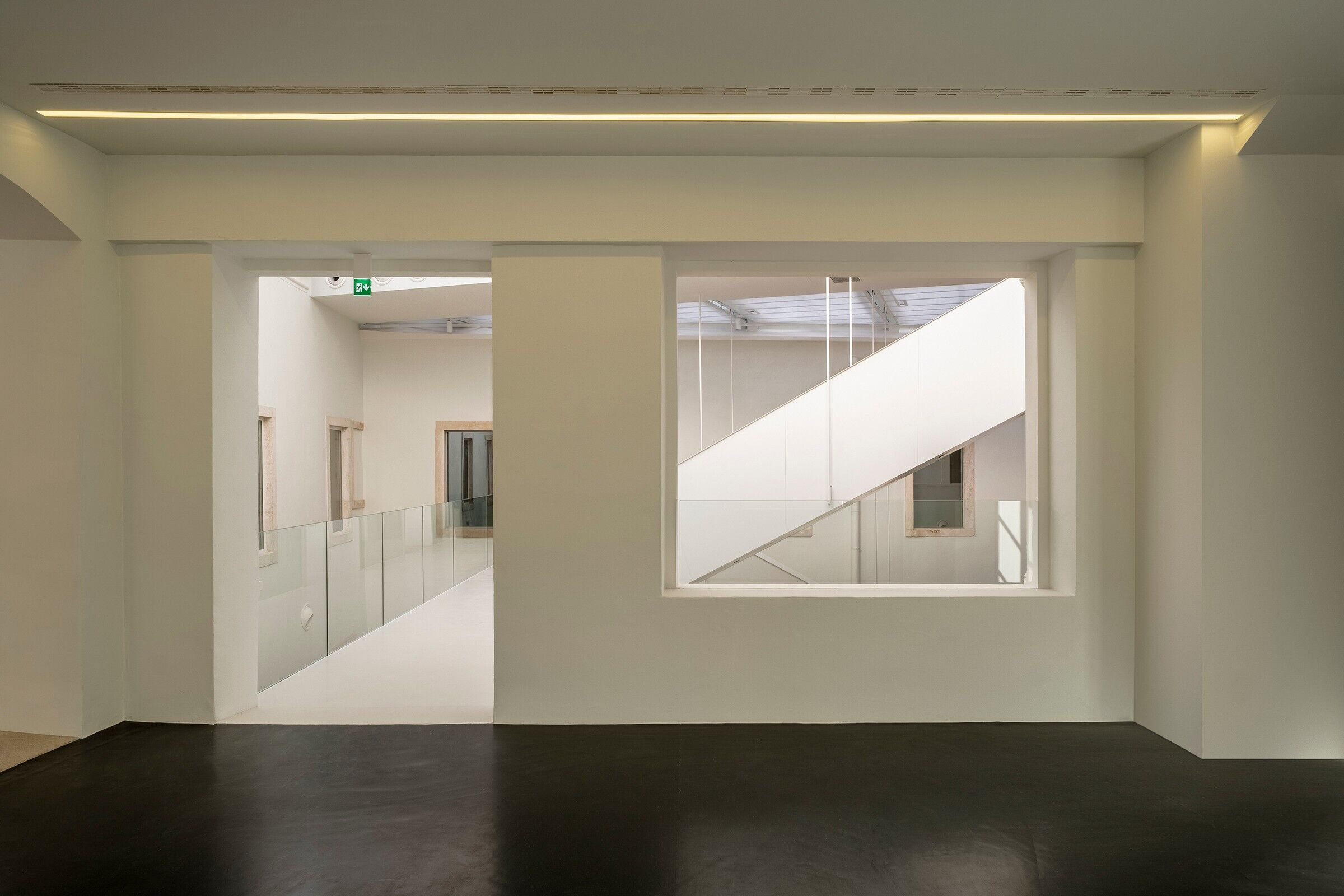

The large atrium of the Providur’s Palace, a former open space, has become a covered passage, a central zone connecting the two buildings. The spacious multilevel volume of the atrium is the most monumental part of the complex and has taken over the crucial function of being the main entrance and exit as well as the space from which a visitor can approach every section of the Two Palaces. By means of visible overlap of historical layers and new architectural elements in the atrium, the encounter of the old and the new has been made most apparent. The space is dominantly white and the light coming through the translucent polycarbonate roof draws the visitor’s eyes upwards, to the steel framework. The steel framework extends into large white staircases which cut through the space of the atrium like feelers, lightly touching the ground they cannot lean on.This is because the original stone floor hides and protects ancient containers, which now serve as water tanks for sprinklers. In addition to the stone floor, the old well cover has also been preserved.

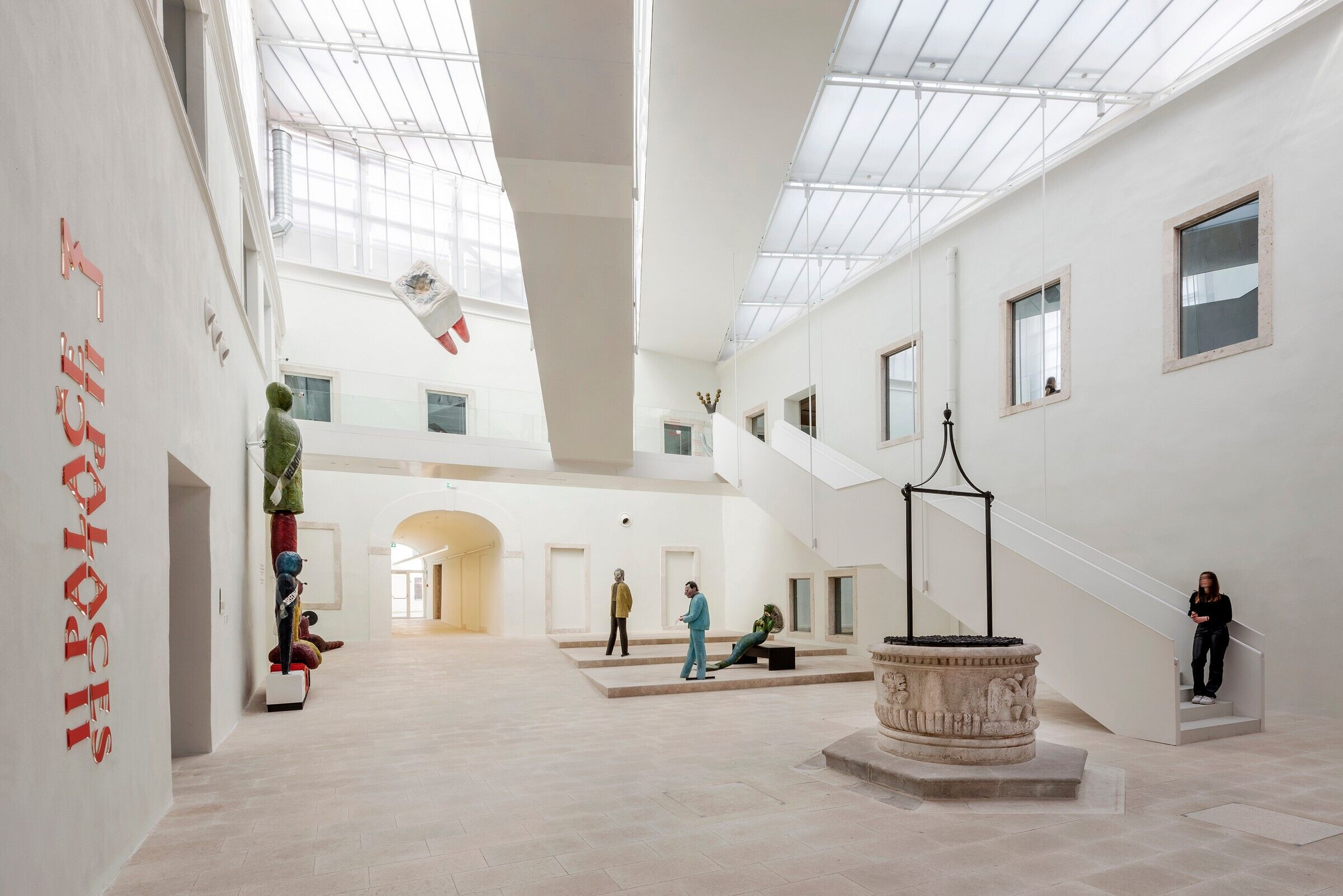
Two bridges cross the open space of the atrium, one newly constructed, one found on-site in the process of renovation. These two bridges link the two diametrically opposed concepts of the palaces’ respective interior organization. One of the two bridges, a former balcony, is accentuated by its bright red color and has become a kind of trademark of the Palace. This ancient steel framework was discovered during the renovation process, under layers of plaster. An engineering gem, the bearing structure is a design particular to 19th century architecture in Dalmatia. Although intended for demolition in the original renovation plans, the architects recognized the value of the structure and decided to keep it. The steel floor of the red structure now contains a ramp, suitable for visitors with disabilities, and it has taken over the function of a bridge connecting the two palaces. Due to its intense coloring, the constructive element has now become a sculpture as well — a dynamic red element in a monochromatic atrium.
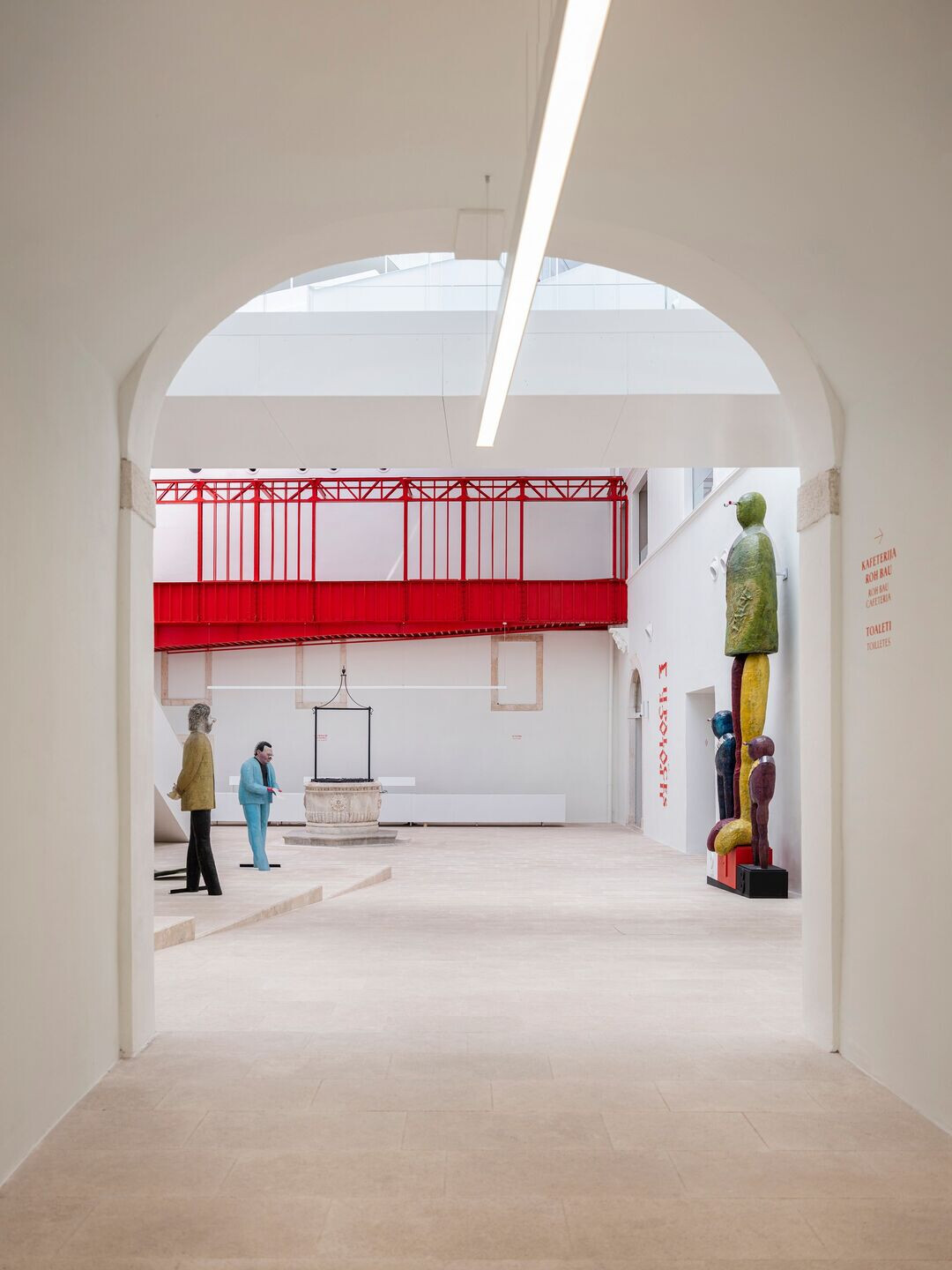
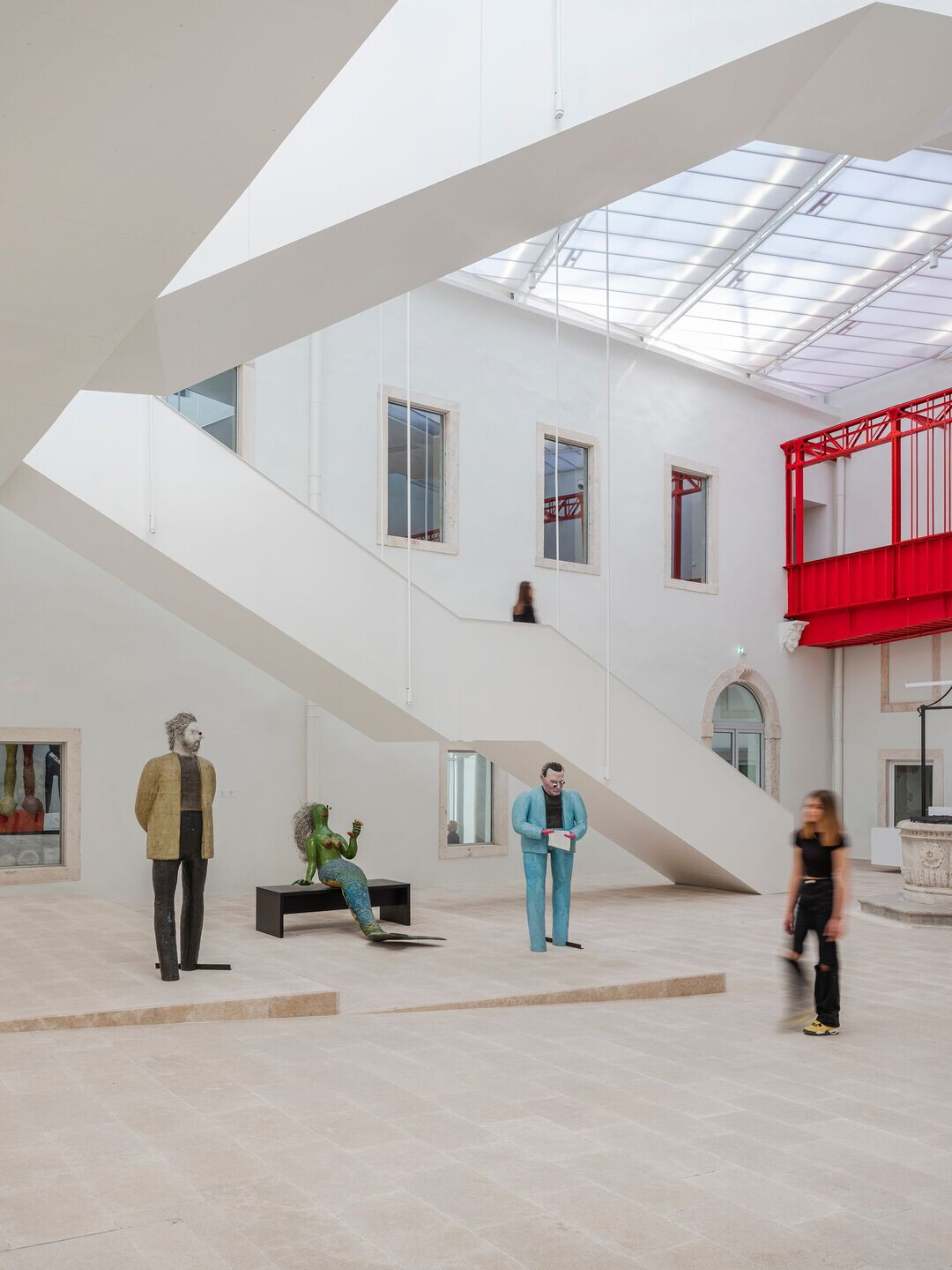
Moving from the overwhelming whiteness of the abstract space, the visitors can climb up to the highest level of the glass corridor where they will find themselves exposed to the blues of the sky and the reds of the surrounding Zadar rooftops. From a kind of belvedere, the city now becomes another exhibit on display.
A steel grid placed on the roof of the complex is the technological, communication and construction backbone of the structure, crucial for the building’s viability. It hides all the installations necessary to meet the requirements in a complex envisioned for such diverse purposes, such as numerous built-in air-conditioning units, ventilation channels and supporting infrastructure. This surprising parasite penetrates, connects, and revivesthe historic structure it leans on, hiding all of its technological equipment while leaving its fifth facade intact.


The old stone relics, the two palaces, have thus been connected to a machine that “keeps them breathing” — an architectural suprastructure concealing new layers which the original palaces were never intended to incorporate. This structure also performs a major tectonic function: the steel grid, leaning on the palace walls, supports the translucent roof of the atrium, the staircases and the glass corridor with its scenic view.
The Two Palaces project is a symbiosis of contemporary architectural infrastructure and the historical layers found on-site. The conceptual background of the project is a fresh, professional, and daring perspective on renovation of centuries-old buildings, which are provided with new infrastructure and adjusted for previously unintended usage, inside protected historical urban spaces. The architects hope that this project will open the door to an unreservedly contemporary approach to construction inside historical city centers, using contemporary language and materials, supported by fruitful communication of all participants in the project: architects, conservationists, representatives of city institutions, building contractors and others.


Team:
Architects: Iva Letilović and Igor Pedišić / AB Forum
Photography: Bosnić+Dorotić
Drone Photography: Filip Brala
Investor: City of Zadar
Contractor: Krekić Avangardi
Structural engineering: UPI-2M
Plumbing systems engineering: Termoprojekt Botica d.o.o.
HVAC systems engineering: Citara d.o.o.
Sprinkler system engineering: APIN projekt d.o.o.
Electrical engineering: Krizni vijak d.o.o.
Fire protection consulting: Inspekting d.o.o.
Electrical installations: Elektron d.o.o.
Polycarbonate roof and facade: Structura d.o.o.
Steel construction: Produkt Bastal d.o.o.

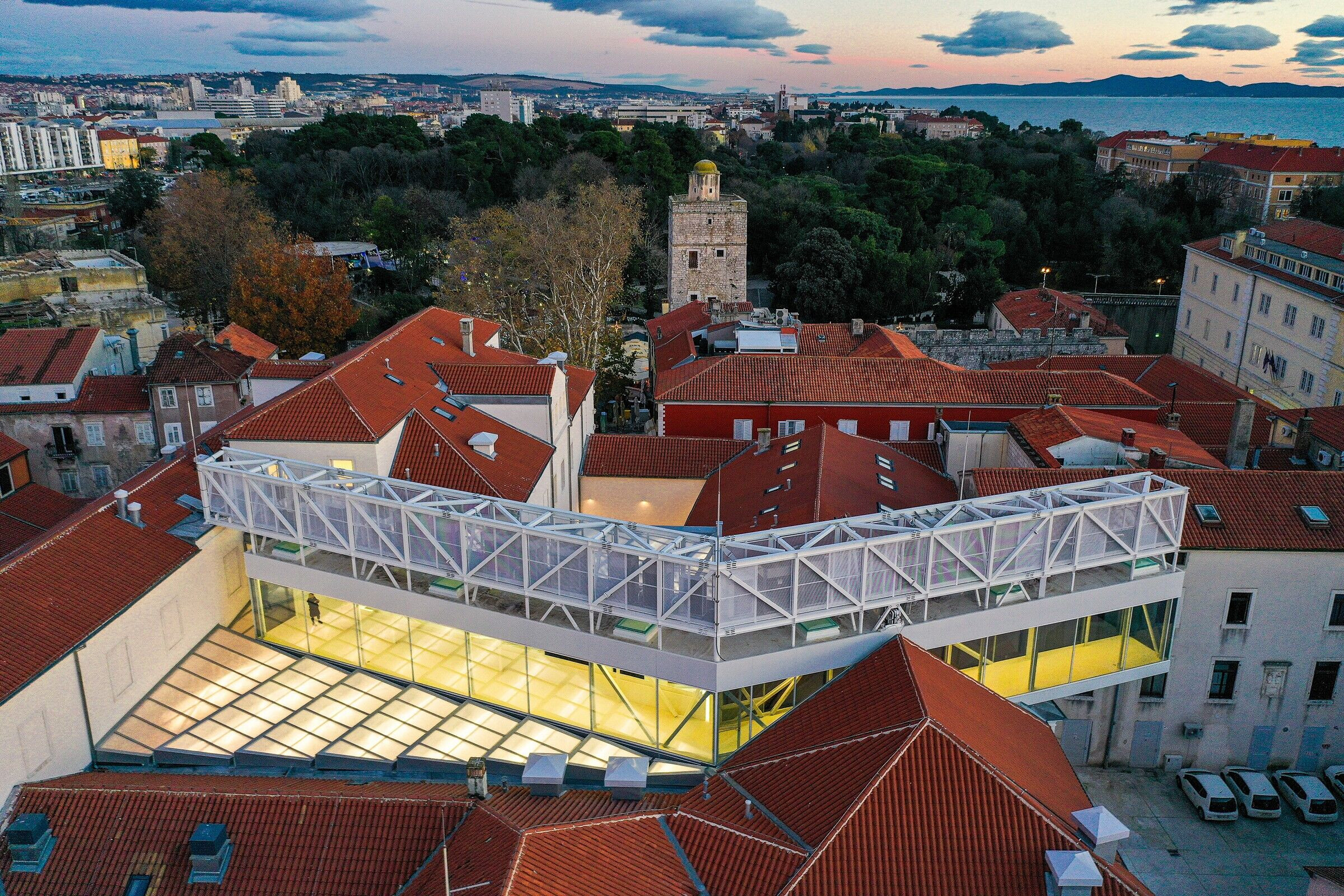
Material Used:
1. Aluminum facade systems: Schüco
2. Steel facade/door systems: Jansen AG
3. Polycarbonate roof and facade: PolyWorld
4. Placter facade: Mapei
5. Dry Flooring: Fermacell
6. Lighting: Zumtobel



